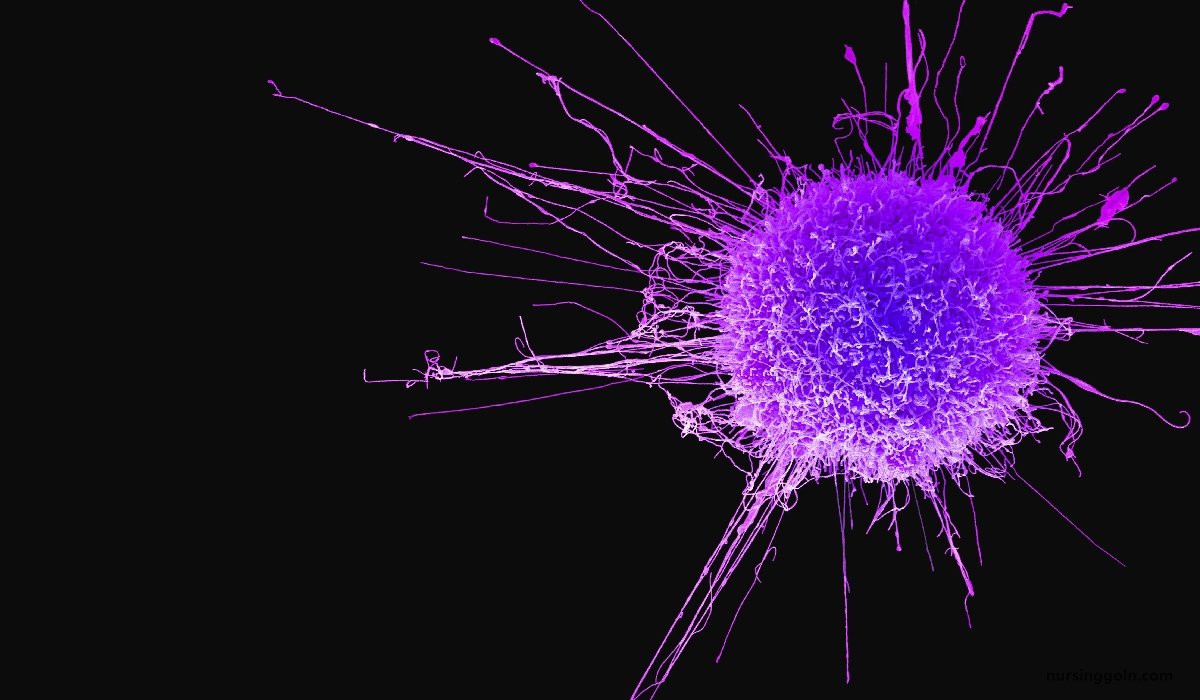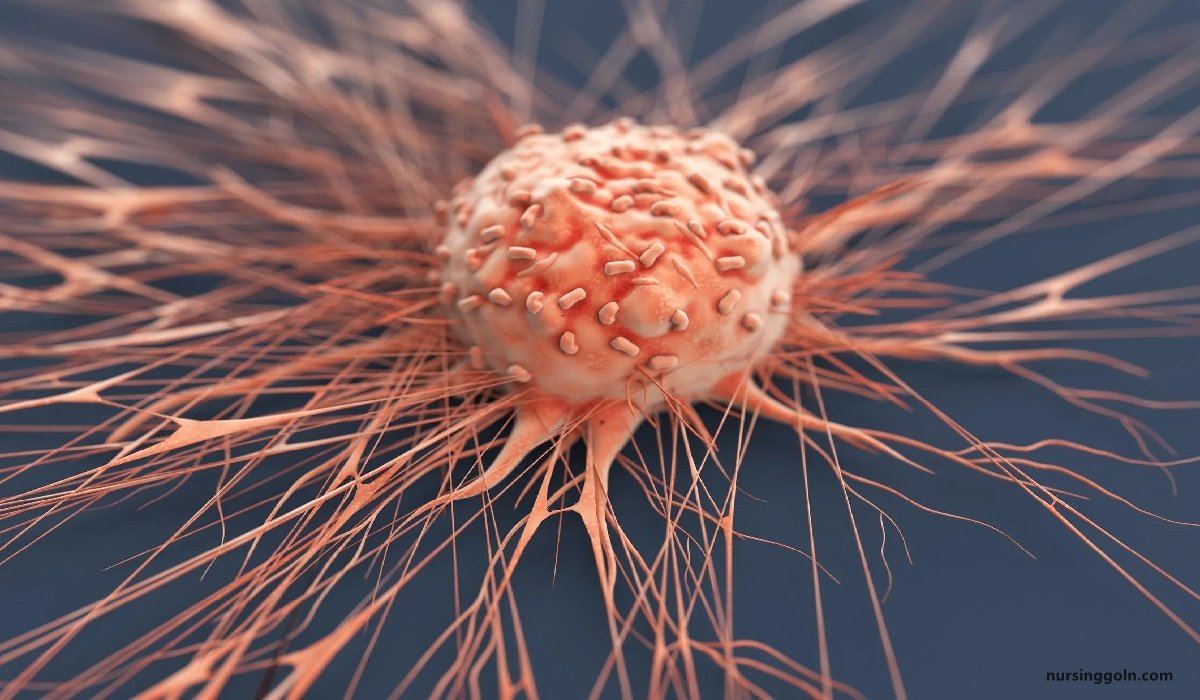Classification of cancer – This course is designed to understand the concept of community health nursing: nurses’ roles and interventions in family health, school health, occupational health, environmental health, elderly health care, gender issues, disaster management and principles and terminology of epidemiology. The aim of the course is to acquire knowledge and skills in community health nursing.
Classification of cancer
can’cer s can be grouped according to the type of cell they start in. There are 5 main categories
1. Carcinoma-can’cer that begins in the skin or in tissues that line or cover internal organs. There are a number of subtypes, including adenocarcinoma, basal cell carcinoma, squamous cell carcinoma, and transitional cell carcinoma
2. Sarcoma-can’cer that begins in the connective or supportive tissues such as bone, cartilage, fat, muscle, or blood vessels.
3. Leukaemia-can’cer that starts in blood forming tissue such as the bone marrow and causes large numbers of abnormal blood cells to be produced and go into the blood
4. Lymphoma and myeloma-can’cer s that begin in the cells of the immune system
5. Brain and spinal cord can’cer s-these are known as central nervous system cancers

Warning Signs of can’cer
| Warning signs | What to look for |
| 1. Unusual bleeding/discharge |
|
| 2. A sore which does not heal | Sores that:
|
| 3. Change in bowel or bladder habits |
|
| 4. Lump in breast or other part of the body |
|
| 5. Nagging cough |
|
| 6. Obvious change in moles | Use the ABCD RULE
|
| 7. Difficulty in swallowing |
|
(Ref by-www.afro.who.int)
Clinical Feature of can’cer :
- The presence of an unusual lump in the body
- Changes in a mole on the skin, such as size, color or shape thickness
- A persistent cough or hoarseness
- A change in bowel habits, such as unusual diarrhea or constipation
- Difficulty in swallowing or continuing indigestion
- Any abnormal bleeding, including bleeding from the vagina, or blood in urine or faeces
- A persistent sore or ulcer
- Difficulty passing urine
- Unexplained weight loss
- Unexplained pain
- Unexplained tiredness or fatigue
- Skin changes such as an unexplained rash or unusual texture
- Unexplained night sweats
- Abdominal pain
Common Types of can’cer in Bangladesh:
- Lung can’cer
- Breast can’cer
- Cervical can’cer
- Colorectal can’cer
- Esophageal can’cer
- Skin can’cer
- Stomach can’cer
- Testicular can’cer
- Prostate can’cer

Etiology/Causes of can’cer :
1. Environmental factors
a) Tobacco: can’cer of the lung, larynx, mouth, pharynx, esophagus, bladder pancreas and probably kidney.
b) Alcohol: esophageal, liver and rectal can’cer s.
c) Dietary factor:
- Smoked fish is related to stomach can’cer .
- Dietary fiber to intestinal can’cer
- Beef consumption to bowel can’cer and
- High fat to breast can’cer
d) Occupational exposure: Exposure to benzene, arsenic, cadmium, chromium, vinyl chloride, asbestos, polycyclic hydrocarbons etc.
e) Viruses:
- Hepatitis B&C: hepatocellular carcinoma.
- HIV infection: Kaposi’s sarcoma, non-Hodgkin’s lymphoma.
- Epstein Barr virus: Burkett’s lymphoma and nasopharyngeal carcinoma.
- Human papilloma virus: can’cer of cervix.
f) Parasites: schistosomiasis: carcinoma of the bladder.
g) Customs habits and life style:
- Smoking: lung can’cer
- Tobacco betel chewing: oral can’cer
h) Others: sunlight. Radiation, air and water pollution, medications and pesticides.
2. Genetic factors: retinoblastoma occurs in children of the same parent.
(Ref by-K Park/234/385)

Risk Factors of can’cer
According to World Health Organization (WHO), common risk factors for cancer include:
- Tobacco use
- Alcohol use
- Overweight and obesity
- Dietary factors, including insufficient fruit and vegetable intake
- Physical inactivity
- Chronic infections from helicobacter pylori, hepatitis B virus (HBV), hepatitis C virus (HCV) and some types of human papilloma virus (HPV)
- Environmental and occupational risks including ionizing and non-ionizing radiation
Definition of Carcinoma
Carcinoma, a cancerous growth of surface (epithelial) tissues of the skin, digestive tract, blood vessels, and various organs. Carcinoma cells tend to invade surrounding healthy tissues and give rise to secondary growths (metastases) distant from the original tumour.
Types of Carcinoma
Carcinomas can occur in many parts of the body. Some common types of carcinoma include:
1. Basal cell carcinoma: The most common type of skin cancer. Cancerous cells develop within the basal cell layer of the skin, or the lowest part of the epidermis. Basal cell cancers usually grow slowly, and it is rare for them to spread, or metastasize, to nearby lymph nodes or even more distant parts of the body.
2. Squamous cell carcinoma: The second most common type of skin cancer. Cancerous cells develop from the flat, squamous cells that are the primary cell type making up the outermost layer of the skin, the epidermis. Squamous cell cancers usually grow slowly, and it is uncommon for them to spread, or metastasize, but they are more likely than basal cell carcinomas to invade fatty tissue beneath the skin or to spread even further.
3. Renal cell carcinoma (RCC): The most common type of kidney cancer. The cancerous cells typically develop in the lining of very small tubes in the kidney, called tubules. Over time, these cells may grow into a mass and cause an obstruction. The cancer may form in one or both of the kidneys.
4. Ductal carcinoma in situ (DCIS): The most common type of breast cancer. Cancerous cells are confined within the lining of the milk ducts, and haven’t spread through the duct walls into surrounding breast tissue.
5. Invasive ductal carcinoma: Cancerous cells grow in the duct lining, break through the wall of the duct and invade local breast tissue. From there, the cancer may spread (metastasize) to other parts of the body.

Pathophysiology of Cancer:
Cancer is a disease process that begins when an abnormal cell is transformed by the genetic mutation of the cellular DNA.
1. Proliferative patterns. Cancerous cells are described as malignant neoplasms because they demonstrate uncontrolled cellular growth that follows no physiologic demand (neoplasia).
2. Characteristics of malignant cells. Cells are undifferentiated and often bear little resemblance to the normal cells; they grow at the periphery and sends out processes that infiltrate and destroy the surrounding tissues; the rate of their growth is variableand depends on level of differentiation; they can gain access to the blood and lymphatic channels and metastasizes to other areas of the body; they often cause generalized effects such as anemia, weakness, and weight loss; they often cause extensive tissue damage and causes death unless growth can be controlled.
3. Invasion and metastasis. Malignant disease processes have the ability to allow the spread or transfer of cancerous cells from one organ or body part to another by invasion (growth of the primary tumor into the surrounding host tissues) and metastasis (dissemination or spread of malignant cells from the primary tumor to distant sites.
4. Carcinogenesis. Carcinogenesis is a malignant transformation that involves initiation(initiators such as chemicals, physical factors, and biologic agents, escape normal enzymatic mechanisms and alter the genetic structure of the cellular DNA), promotion(repeated exposure to cocarcinogens causes the expression of abnormal or mutant genetics information), and progression (the altered cells exhibit increased malignant behavior).
5. Role of the immune system. Some evidence indicates that the immune system can detect the development of malignant cells and destroy them before cell growth becomes uncontrolled, but when the immune system fails to identify and stop the growth of malignant cells, clinical cancer develops.
Read more:
